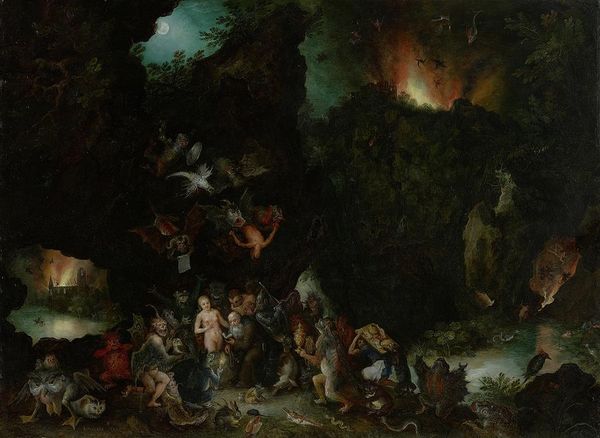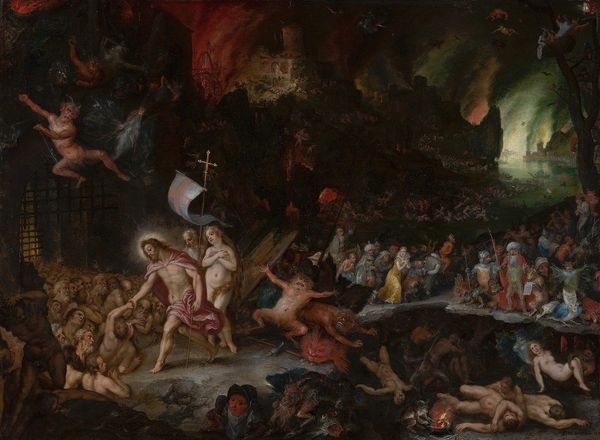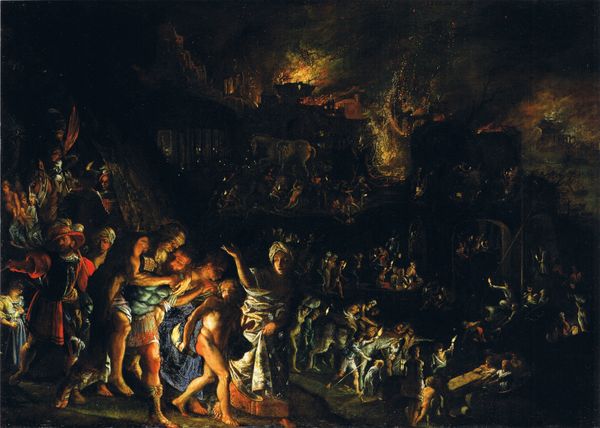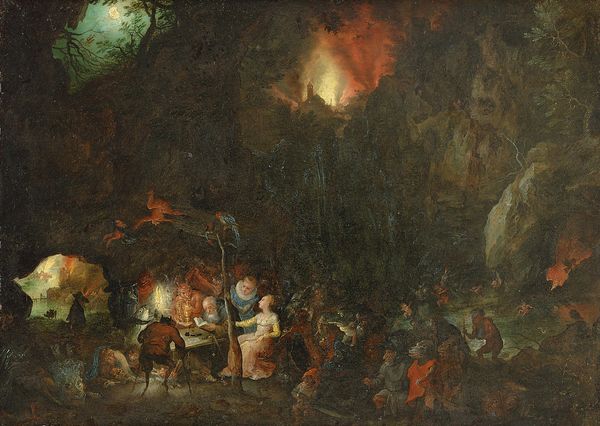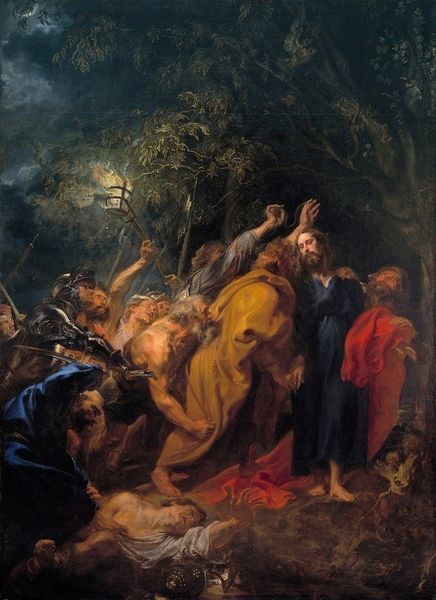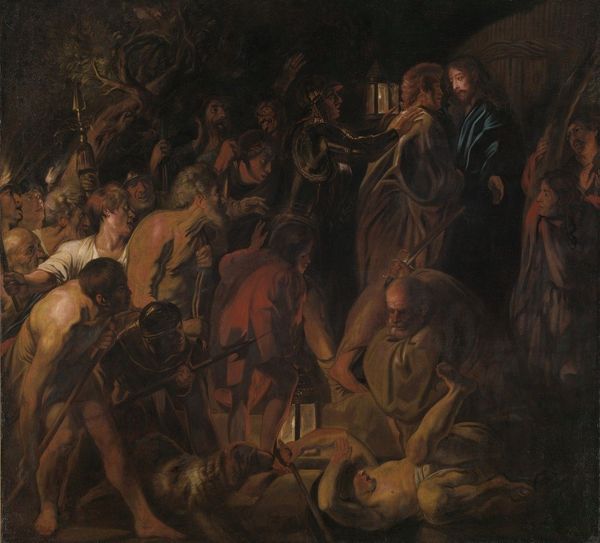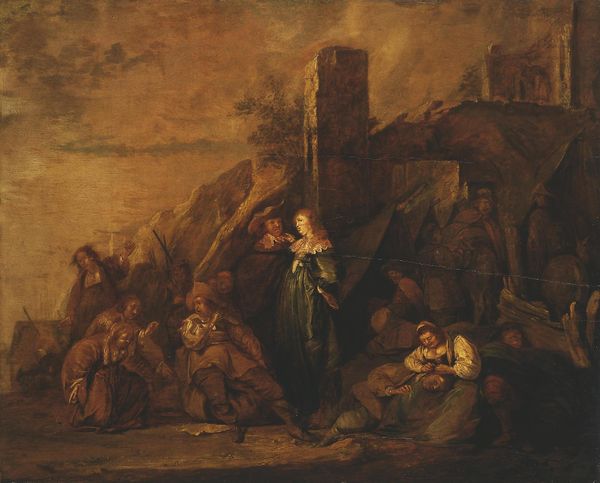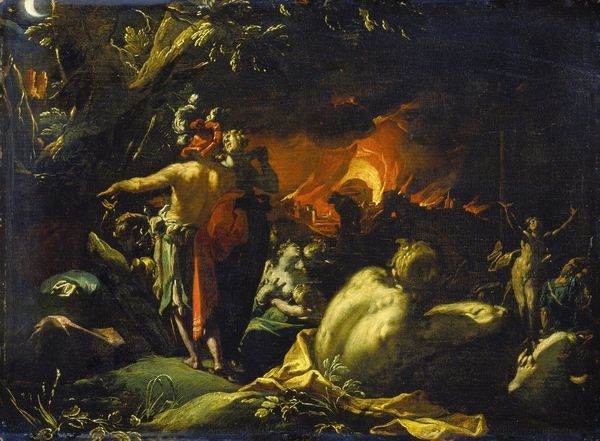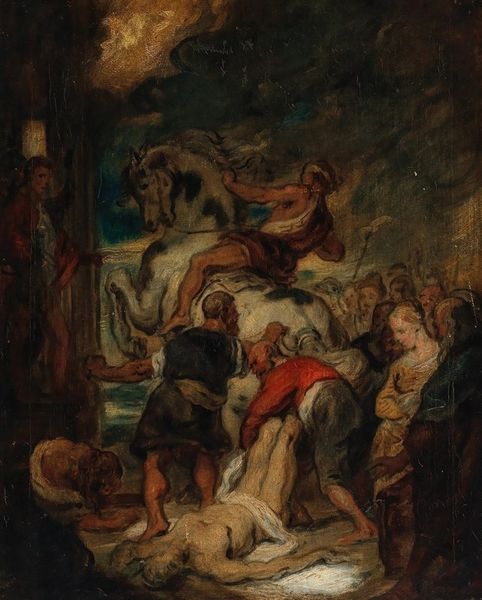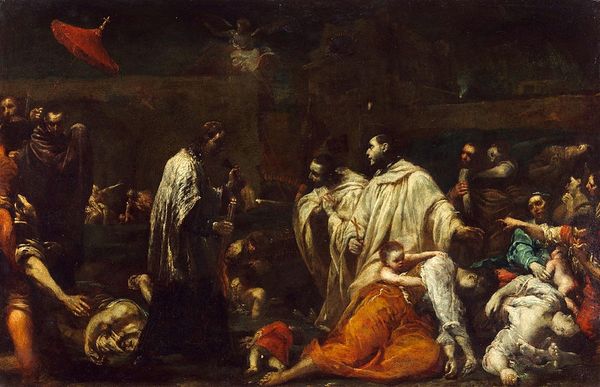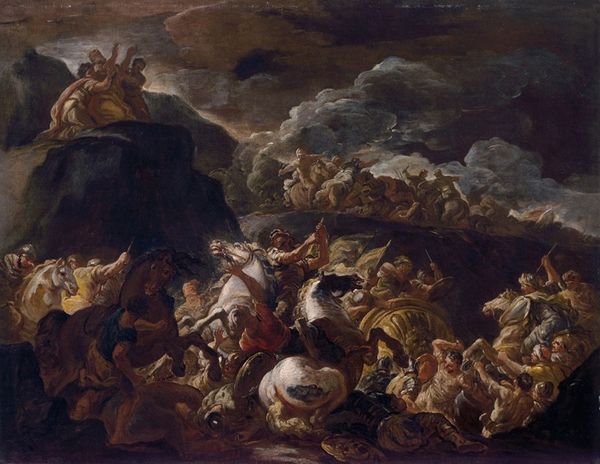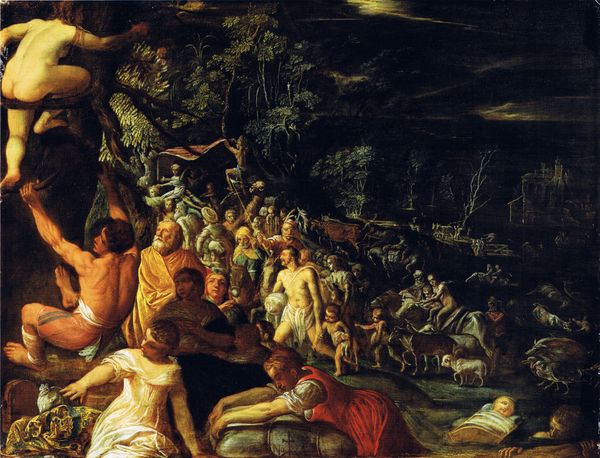
painting, oil-paint
#
baroque
#
painting
#
oil-paint
#
landscape
#
painted
#
figuration
#
oil painting
#
genre-painting
#
history-painting
Copyright: Public domain
Curator: Take a moment to observe Jan Brueghel the Elder’s "Aeneas and the Cumaean Sibyl in the Underworld." Editor: My first impression? What a fantastic, miniature stage set of terrors, realized in oil! It’s almost claustrophobic, crammed with tiny figures, demons, and otherworldly details. Curator: It is remarkable. Brueghel masterfully captures a key moment from Virgil’s Aeneid. The Sibyl, acting as Aeneas' guide, leads him through the gates of hell. Editor: I’m immediately drawn to the variety of textures. Look at the way Brueghel renders the rocky cavern walls versus the luminous, almost iridescent, water. I’d be curious to examine the priming layers he chose for this panel. The underpainting must have dictated his ability to capture that luminosity. Curator: Indeed. The composition cleverly divides the space into zones. The foreground, populated by monstrous figures, gives way to a purgatorial middle ground before culminating in the fiery depths. This resonates with the psychological journey, with Aeneas confronting the darker aspects of himself. The artist imbues this landscape with recognizable symbols of fear, of the unknown, things humans struggle to visualize or come to terms with even now. Editor: I think examining Brueghel’s position in Antwerp as vital. He came from a family of painters, right? This piece is speaking to courtly interests but filtered through a decidedly Flemish eye, I see an attempt to legitimize genre painting by connecting it to high art, essentially the Classics. I also think a study of art market influence would enrich an understanding of why such classically derived mythological subjects gained such popularity. Curator: I concur. But observe how this particular underworld seems tailored, it is as much Christian Hell as a vision from Virgil's texts. Brueghel seems to explore the concept of judgement, punishment, and ultimately, perhaps, of redemption within the structure of classic myth. Editor: Fascinating. Seeing how Brueghel used the medium to engage not only classical and mythical imagery but his socio-economic environment truly opens new interpretative strategies. Curator: This deep dive into the cultural layers helps us engage more with the historical meanings layered into the symbolism of the painted space.
Comments
No comments
Be the first to comment and join the conversation on the ultimate creative platform.
